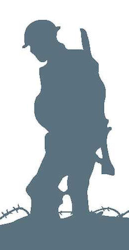Name
Walter John Edward Owen
Conflict
First World War
Date of Death / Age
15/09/1916
21
Rank, Service Number & Service Details
Private
20691
York & Lancs Regiment
2nd Bn.
Awards: Service Medals/Honour Awards
Not Yet Researched
Cemetery/Memorial: Name/Reference/Country
THIEPVAL MEMORIAL
Pier and Face 14 A and 14 B.
France
Headstone Inscription
NA
UK & Other Memorials
Abbots Langley Village Memorial,
St. Lawrence Church Memorial, Abbots Langley,
We are not aware of any memorial in Trowley Bottom
Biography
Walter Owen has a special place in the “Back to the Front Project”. He was the first man researched by the Project. Walter was one of three brothers and five sisters of Thomas Owen and his two wives Mercy and Sophia. Thomas had re-married after his first wife died in 1893, and Walter was the only child from the second marriage. He was born in 1896. The family lived in Breakspeare Road until Thomas died in 1898, whereupon Sophia moved to “The Wooden House” at Abbots Bottom, near to Asylum Road (now College Road).
In the 1911 Census, Walter was working at a Chocolate Factory in north Watford, and when war broke out in August 1914, he was working as a Groom. On 10th August he travelled to Whitehall and enlisted and had a medical examination on the same day. He joined up as a “Dragoon of the Line” in the 15th Hussars and went off to Longmoor Camp near Petersfield in Hampshire to start his training. In April 1916 he spent over three weeks at Frensham Hill Hospital suffering from tonsillitis, and when he returned to his unit he was informed that he was to be transferred to the Infantry. The situation on the Western Front had become a stalemate of trench warfare and whilst there was an ever-increasing need for more and more men to fight, there was little need for cavalrymen in what had become a static war. Walter transferred to the 3rd Yorks & Lancs and from there to the 2nd Battalion. He embarked for the Western Front on 13th July 1915 and joined up with his unit in the Field on 24th July as a Lewis Machine Gunner, near the hamlet of Hooge to the east of Ypres
Six days later on 30th July, the Germans, using their new weapon, the flame-thrower, attacked Hooge. Fighting raged for several days, and on 9th August the 2nd Yorks & Lancs went “over the top” at Hooge in an attempt to re-take the hamlet. The battalion lost 48 men killed, 42 missing and 197 wounded in an encounter which lasted less than an hour. Walter survived and then spent a relatively uneventful year rotating between the Front Line and reserve areas in the Ypres sector, before the 2nd Yorks & Lancs were sent to the Somme Front, arriving in early August 1916, and spending the next month in reserve.
On 15th September 1916 the battalion was brought into the Front Line to attack an enemy defensive strong-point named “The Quadrilateral”. In this action the British Army unleashed their secret weapon, the Tank. Of the three Tanks assigned to support the attack on Walter’s part of the front, only one arrived on the battlefield and was beaten off immediately. The other two didn’t arrive in time, having broken down. Unsupported, the 2nd Yorks & Lancs went forward against “The Quadrilateral” and Walter was killed in action in this encounter.
The November 1916 edition of the Abbots Langley Parish Magazine reported
“On the same day as Thomas Clark, Walter Owen of the 2nd York and Lancaster, met his death in France. He joined up at the beginning of the War, and went out to France more than a year ago. He was a most cheerful and happy individual. His half-brother, John Owen, died in France in June”.
Walter’s elder brother, Bertie Owen, was recorded as serving in January 1918, and survived the War. A Memorial Service for Walter was held on 6th December 1916 at St Lawrence Church. Walter was commemorated on the Thiepval Memorial to the Missing on the Somme, and on the Abbots Langley War Memorial.
Acknowledgments
Roger Yapp - www.backtothefront.org



